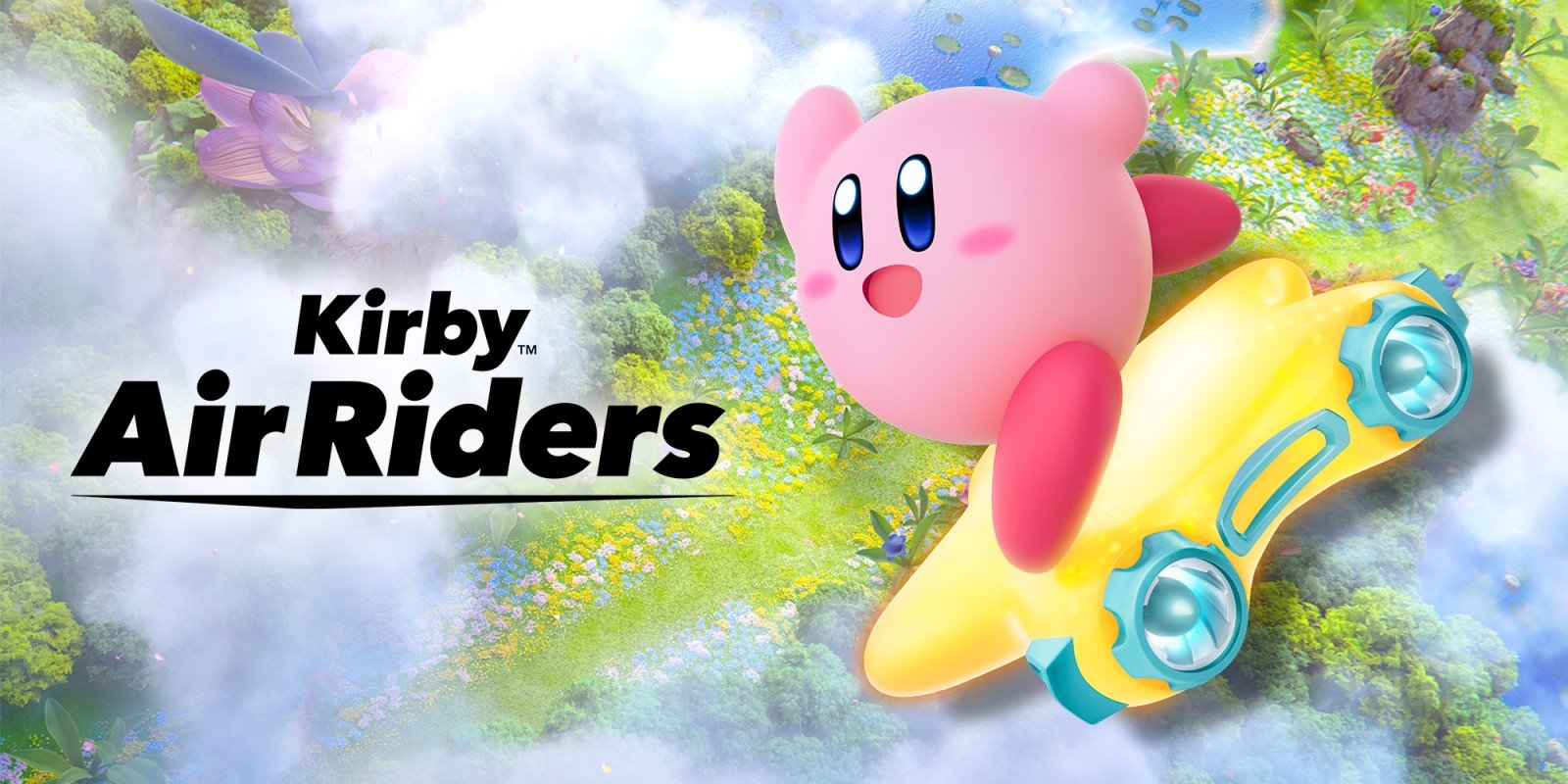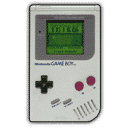
Summary:
Kirby Air Riders is almost ready to hit Nintendo Switch 2, but before launch, the Global Test Ride demo is giving players a serious taste of high-speed chaos in the sky. Nintendo has now pushed the demo client to Version 1.0.1, a focused update that tackles online stability, City Trial matchmaking, and a handful of frustrating bugs that could stall matches or freeze progress in paddocks. For anyone planning to jump into the final Global Test Ride windows on November 15 and 16, this update is the version that really matters. We walk through what changed behind the scenes, why the fixes are especially important for City Trial fans, and how the new build should make lobbies feel snappier and more reliable. You also get a clear look at the official time slots in PT and how they translate to other major time zones, so you can plan sessions with friends without doing mental gymnastics. By the end, you know exactly what Version 1.0.1 brings to the table, how to grab the update, and how to squeeze the most value out of the last free online sessions before the full release.
Kirby Air Riders Global Test Ride Version 1.0.1 at a glance
Version 1.0.1 of the Kirby Air Riders Global Test Ride demo is a targeted clean-up pass rather than a flashy overhaul, and that is exactly why it matters. Instead of adding new modes or vehicles, Nintendo focused on how the demo behaves when 16 players pile into City Trial and try to smash through races back-to-back. The headline points are simple: online communication stability has been improved, City Trial matching is less likely to hang for ages, matches are more likely to start correctly once everyone is gathered, and weird scenarios where other players’ games stop progressing after a communication error in the paddock have been addressed. On top of that, a set of “miscellaneous gameplay fixes” smooths out rough edges that might not make headlines but definitely shape how sessions feel moment to moment.
Think of Version 1.0.1 as tightening all the bolts on a racing machine right before you open the track gates to more drivers. The physics, tracks, and machines are the same, but the structure around them is less likely to wobble or throw up errors when traffic gets heavy. For a Global Test Ride that exists mainly to stress the online systems and matchmaking flow, that kind of reliability is gold. It means players can focus on slipstreaming rivals, hunting power-ups, and messing around in City Trial’s sandbox instead of staring at frozen timers or wondering if a lobby quietly broke in the background.
Why the 1.0.1 update matters for online players
If you only dabble in offline play, a version number bump might look like a tiny detail. For online players, though, the difference between a flaky demo and a stable one can decide whether you recommend Kirby Air Riders to friends or quietly move on. Before Version 1.0.1, some players reported sluggish matchmaking in City Trial, lobbies that never quite tipped over into the actual match, and situations where an error for one person in a paddock could effectively stall the rest of the room. That kind of friction is deadly for a test event that runs on fixed time slots; losing ten minutes to a broken lobby in a six-hour window feels awful.
By shoring up communication stability and tightening the way City Trial matching behaves, this update gives your remaining Test Ride time more value. Instead of burning a chunk of a session troubleshooting, you are more likely to bounce quickly from lobby to lobby, testing different machines, tracks, and strategies. It also paints a more honest picture of how the launch version of Kirby Air Riders should behave online. The whole purpose of a demo like this is to build trust: if it runs well now, players can feel more confident pre-ordering or jumping in on day one. Version 1.0.1 is Nintendo’s way of saying that the team heard the early feedback from the first weekend and moved fast to keep the second weekend running more smoothly.
Global Test Ride schedule and remaining time slots
The Global Test Ride does not run around the clock. Instead, it opens in defined windows across two weekends, and the final set of sessions is exactly where Version 1.0.1 will shine. On the second weekend, which is the one that matters now, the schedule in Pacific Time (PT) looks like this: November 15 from 12:00 a.m. to 6:00 a.m. PT, November 15 from 4:00 p.m. to 10:00 p.m. PT, and November 16 from 7:00 a.m. to 1:00 p.m. PT. If you played in the first weekend, you already know the drill: download the Global Test Ride demo from the Nintendo eShop, wait until one of the windows starts, and then jump into online play once the servers open for your region.
Because the event is global, those same windows look very different depending on where you live. For players in North America on Eastern Time, the three windows translate to November 15 from 3:00 a.m. to 9:00 a.m. ET, November 15 from 7:00 p.m. to 1:00 a.m. ET (rolling into November 16), and November 16 from 10:00 a.m. to 4:00 p.m. ET. In Europe on Central European Time, the same slices become November 15 from 9:00 a.m. to 3:00 p.m. CET, November 16 from 1:00 a.m. to 7:00 a.m. CET, and November 16 from 4:00 p.m. to 10:00 p.m. CET. Knowing this ahead of time makes it much easier to plan sessions with friends and to pick the window that actually fits your life instead of just hoping to catch servers when they are live.
Converting the Test Ride times to your own time zone
Time zone conversions can feel like trying to steer a Warp Star through a maze of invisible bumpers, especially when the sessions cross over midnight. A simple trick is to treat Pacific Time as your base and remember a couple of rough offsets. Eastern Time is three hours ahead of PT, Greenwich Mean Time sits roughly eight hours ahead during this period, and Central European Time lands nine hours ahead. That means every slot starting at midnight PT effectively becomes a morning session in Europe and an early breakfast session on the U.S. east coast. Evening PT slots, like the 4:00 p.m. to 10:00 p.m. PT window, turn into late-night or even overnight windows as you move across the map.
If that still feels messy, it helps to set alarms on your phone or console. The Global Test Ride windows are precious, so treating them like a small event in your calendar is worth the effort. One of the easiest moves is to check the official schedule once, convert each slot to your local time using a quick online time zone tool, and create three reminders labeled “Kirby Air Riders Test Ride.” That way, you get a nudge when it is time to boot the demo, and you are less likely to realize half an hour before the end of a slot that you completely forgot to log in.
City Trial mode fixes and what they change
City Trial is the star of the show for many Kirby Air Riders fans, and it is also the area that needed the most care in the demo. The idea of City Trial is simple on paper: roam a compact city-like environment, smash crates, collect power-ups, grab machines, and then roll into a final event. In practice, that whole flow depends heavily on stable matchmaking and clean transitions between lobby, paddock, and race. Before Version 1.0.1, some players hit walls at exactly those points, with matching taking too long or the match itself never quite kicking off properly once everyone appeared to be ready.
By addressing City Trial matching specifically, Nintendo is smoothing out the heart of the Global Test Ride. When matchmaking connects more reliably, you spend less time watching loading screens and more time boosting through alleys. When matches reliably start after a successful match, you avoid that awkward “did it break?” moment where everyone in the room wonders if they should back out or hold tight. It sounds small, but anyone who has tried to coordinate City Trial sessions with friends knows that this kind of reliability is what keeps people queuing up for “one more run” instead of drifting away to something else.
Matchmaking stability and lobby behavior
Matchmaking is the invisible engine of any online racing experience, and City Trial in the Global Test Ride relies heavily on it. The patch notes call out that City Trial matching sometimes did not successfully connect after a long period of time. That kind of issue often feels like the lobby is haunted: timers keep ticking, search messages appear on screen, but no one actually gets pulled into a match. With Version 1.0.1, those long, unproductive searches should be far less common, giving the system a better chance to find a room quickly or at least fail gracefully when there truly are not enough players available.
Lobby behavior is just as important. A stable matchmaking system does not only find players; it also needs to seat them correctly in lobbies, pull them into the right paddocks, and then hand them off to the next phase without tripping. Before this update, some City Trial matches simply did not start properly even after matching, which could leave players stuck in a kind of limbo. The new build’s fixes are designed to reduce that limbo, so when you see that you have matched with others, you can trust that a proper round is actually on the way. That confidence makes the whole experience feel smoother and less random.
How City Trial rounds now flow from paddock to race
The paddock is where Kirby Air Riders’ online personality really shows itself. It is the small staging area where players roll around, chat through their movements, and test machines before the actual event kicks off. Unfortunately, it was also a point where things could go wrong in the earlier demo build. The patch notes specifically mention fixing an issue in which a player experiencing a communication error in a paddock could cause other players’ games to stop progressing. In other words, one person’s connection hiccup could effectively freeze everyone else’s experience.
Version 1.0.1 aims to sever that chain reaction. If someone’s connection drops, the rest of the lobby should now be far less likely to get dragged down with them. That means more City Trial rounds that actually end in a proper event rather than a confused reset. For players, the practical effect is simple: once you are in the paddock and moving around, you can feel more relaxed about the match going the distance. It gives City Trial the rhythm it needs—paddock chaos, then a focused event—rather than leaving everyone wondering if the next communication hiccup will force another regroup.
Communication stability and lag reduction improvements
Beyond City Trial’s dedicated fixes, the overarching improvement in communication stability is the backbone of the Version 1.0.1 update. When a demo is labeled “Global Test Ride,” it is a safe bet that servers are being stressed from every angle. That is by design. Nintendo wants to see how Kirby Air Riders holds up when players from different regions, connection types, and skill levels pile into the same infrastructure. The catch is that players themselves still hope for smooth races, even if the event doubles as a stress test. That is where the communication tweaks come in.
Improved stability means fewer random disconnects in the middle of a race, fewer moments where riders jitter or stutter across the track, and fewer hard kicks back to the title screen. It does not magically fix every home network issue in the world, but it does make better use of the connection you bring to the table. In a game where boosts, drifts, and tight lines matter, shaving away even small bits of lag can make the difference between feeling in control and feeling like the game is constantly correcting you. For a demo that is supposed to sell players on the full experience, that sensation of control is one of the most important things Nintendo can deliver.
What to do if you still see connection issues
Even with a cleaner demo build, online play is still a partnership between your console, your network, and Nintendo’s servers. If you are still seeing connection errors, it is worth taking a minute to rule out easy local fixes before assuming the game is at fault. Checking whether other online titles on your Switch 2 behave normally is a quick way to spot a wider problem. If everything else stutters, your home network might need attention. It also helps to make sure that no one in the house is hammering the bandwidth with 4K streaming or massive downloads while you are trying to glide through City Trial.
Another practical step is to switch from Wi-Fi to a wired connection using a LAN adapter if your setup allows it. Wireless can work well, but in busy households or apartments, signal interference adds invisible bumps to your races. A wired link keeps things predictable. If none of that helps and you still see errors only inside the Test Ride windows, that is when it is most reasonable to assume that server load or regional congestion is the culprit. In those cases, backing out and trying again a little later in the same slot can sometimes give you a smoother run without any extra effort.
Basic online checks before joining a lobby
Before you even hit “Start” on the Global Test Ride, a couple of quick checks can save you from unpleasant surprises. Confirm that your Nintendo Switch Online membership is active if you want to jump into online City Trial, since certain online features depend on it. Make sure your console has grabbed Version 1.0.1 of the demo by checking for software updates on the Kirby Air Riders Global Test Ride icon in the HOME menu. If the system offers an update, let it finish before the next time slot begins so you are not stuck downloading while everyone else is already racing.
It is also smart to close other running software on your Switch 2 and give the console a quick restart if you have not done so in a while. That simple reset often clears lingering hiccups. Finally, run a basic connection test in the system settings. Seeing a stable connection speed and NAT type that is not too restrictive can flag whether you are good to go or might run into trouble. These small rituals only take a few minutes, but they stack the deck in your favor when the Test Ride windows finally open.
Other gameplay tweaks and small polish changes
The patch notes end with a familiar catch-all line: several other miscellaneous gameplay fixes. That phrase can hide all sorts of micro-adjustments, from tiny camera nudges to rare edge-case bugs that only show up in specific circumstances. While Nintendo has not broken down each micro-fix in public detail, it is safe to assume that testers and early players flagged odd behavior during the first weekend. That can include things like strange interactions between certain machines and obstacles, occasional UI hiccups, or minor desyncs between what different players see in shared spaces.
Even if you never hit one of those quirks yourself, polishing them away increases the sense that Kirby Air Riders is already in a confident state heading into launch. When a Global Test Ride feels rough around the edges, people often worry that the full release will arrive in the same condition. When the demo is updated quickly and quietly runs better, that worry fades. The small fixes also show that this event is not just a marketing beat; it is a living testbed where feedback is turned into changes at a rapid pace. That kind of responsiveness always bodes well for post-launch support once the full roster of players arrives.
Tips to make the most of the remaining Test Ride windows
With only a handful of sessions left, it is worth heading into each Test Ride window with a loose plan rather than just drifting aimlessly. One simple approach is to dedicate your first run in a window to warming up in less chaotic matches or modes before diving straight into full City Trial chaos. That gives your hands time to settle into the controls again, especially if you have taken a few days off between weekends. It also gives you a more accurate feel for how Version 1.0.1 behaves, since you can compare it to your memory of the earlier build in calmer conditions.
It also helps to decide ahead of time which machines and playstyles you want to focus on. Kirby Air Riders thrives on experimentation, but a limited event is not always the best place to just wander through every option at random. Picking one or two machines to really learn within a single window can make your sessions feel more meaningful. You start to understand their acceleration, turning quirks, and how they react under pressure in City Trial events. As a bonus, that focus makes it easier to notice how stable online play feels, because you are not constantly switching machines and variables on yourself while also judging the netcode.
What this demo patch suggests about the launch version
One of the most interesting parts of any online test is what it hints at for the future. Version 1.0.1’s focus on communication stability and City Trial reliability suggests that Nintendo and the Kirby Air Riders team are watching online data closely and are willing to react quickly when problems appear. That mindset is crucial for a racing experience that will live or die on whether people can hop into smooth matches a month, six months, or a year after launch. If this is how fast the team moves for a limited-time demo, it sets expectations that the full release will see timely patches as well.
The nature of the fixes also hints that the core systems underneath Kirby Air Riders are already in good shape. Rather than scrambling to fix major gameplay bugs, the team is tightening specific pipes: matchmaking funnels, paddock error chains, and communication handoffs between phases. That pattern fits a project that is nearing release and is now focusing on real-world behavior under stress instead of rewriting big gameplay chunks. For players, that should be encouraging. It means the Global Test Ride is less about salvaging a shaky build and more about tuning something that is mostly ready, which is exactly what you want to see before a big Switch 2 launch.
How to download or update the Kirby Air Riders demo
If you still need to grab the Global Test Ride demo, the process is straightforward. Head to the Nintendo eShop on your Switch 2, search for Kirby Air Riders, and look for the listing specifically labeled as the Global Test Ride or free demo event. Once you select it, download the software like any other eShop title. The download is not enormous by modern standards, but it is worth starting a little ahead of the Test Ride window so you are not racing the clock before the servers open. Once installed, the demo icon will sit on your HOME screen waiting for the next official time slot.
For players who already have the demo installed from the first weekend, updating to Version 1.0.1 is just as simple. Highlight the Kirby Air Riders Global Test Ride icon, press the plus button, and select the option to check for software updates. As long as your console is connected to the internet, the system will find and apply the latest version, pulling you up to 1.0.1 before you hit the servers again. Let the download and installation complete fully, and consider launching the demo once before the window begins just to confirm that nothing else is waiting to install. Once that is done, you are ready to enjoy the more stable version of the Test Ride.
Global Test Ride what comes next
The Global Test Ride for Kirby Air Riders is more than a simple teaser; it is a shared test track where players and developers meet halfway. Players bring curiosity, excitement, and sometimes very chaotic driving. Developers bring a work-in-progress build that needs real-world pressure. Version 1.0.1 shows that this trade-off is working. Problems spotted during the first weekend—especially around City Trial matchmaking and paddock stability—have been met with a quick, focused response that should make the second weekend feel more reliable and more fun. That is exactly what you want from an event like this.
Looking ahead to the full release, the demo’s evolution is a reassuring sign. If Nintendo continues to treat player feedback with this level of urgency, Kirby Air Riders could become one of those multiplayer fixtures people return to regularly on Switch 2, especially with its blend of classic Kirby charm and surprisingly competitive races. For now, the main goal is simple: make the most of the remaining Test Ride windows, pay attention to how the game feels under your thumbs, and decide whether the full experience is worth a spot in your library. Version 1.0.1 gives you the best possible snapshot before launch.
Conclusion
Kirby Air Riders’ Global Test Ride started as a fun way to hop onto Warp Stars early, but Version 1.0.1 elevates it into a much more useful preview. With matchmaking tightened, paddock issues reduced, and overall communication stability improved, the demo now does a better job of showing how online play should feel on launch day. The fixed schedule still means you need to plan around specific hours, yet the reward is a more consistent set of races and City Trial sessions that actually reach their dramatic finales. By grabbing the update, running a couple of basic network checks, and jumping into the remaining time slots with a clear plan, you give yourself the best chance to see what Kirby Air Riders really offers on Switch 2. If the energy and responsiveness shown in this demo carry through to the full release, fans of fast-paced, characterful racing have plenty to look forward to.
FAQs
- What does Kirby Air Riders Global Test Ride Version 1.0.1 change?
- The Version 1.0.1 update focuses on improving online reliability. It enhances communication stability during online play, fixes City Trial matchmaking that could take too long or fail to connect properly, addresses issues where matches sometimes did not start correctly, and resolves situations where a communication error in the paddock could stop other players’ games from progressing. It also includes several smaller gameplay fixes aimed at smoothing out rough edges.
- When are the remaining Kirby Air Riders Global Test Ride demo sessions?
- During the second weekend, the remaining official windows in Pacific Time are November 15 from 12:00 a.m. to 6:00 a.m. PT, November 15 from 4:00 p.m. to 10:00 p.m. PT, and November 16 from 7:00 a.m. to 1:00 p.m. PT. These translate to different hours depending on your region, so players in other time zones should convert them in advance and set reminders to avoid missing the sessions.
- How do I update the Kirby Air Riders Global Test Ride demo to Version 1.0.1?
- To update, highlight the Kirby Air Riders Global Test Ride icon on your Switch 2 HOME menu, press the plus button, and choose the option to check for software updates. As long as your console is connected to the internet, it will download and install Version 1.0.1 automatically. Once the update is complete, you are ready to connect during the next Test Ride window without any extra steps.
- Do I need Nintendo Switch Online to play in the Kirby Air Riders Global Test Ride?
- For online modes such as City Trial during the Global Test Ride, an active Nintendo Switch Online membership is required. Some offline elements, like basic lessons and certain local options, can be explored without a subscription, but the heart of the Test Ride event is online racing, which depends on that membership. Checking your subscription status before a time slot starts can prevent last-minute surprises.
- What should I do if I still encounter lag or disconnects after the update?
- If you still experience issues with lag or disconnects on Version 1.0.1, start by testing your home network and other online games on your Switch 2 to see if the problem is broader. Using a wired LAN adapter instead of Wi-Fi, restarting your console, and closing other apps or downloads in your home can all help. If the issues only appear during peak Test Ride periods, they may be related to server load, in which case trying again later in the same window can sometimes yield smoother races.
Sources
- How to Update the Kirby Air Riders: Global Test Ride Demo, Nintendo Support, November 14, 2025
- Kirby Air Riders: Global Test Ride Demo Updated To Version 1.0.1, Here Are The Full Patch Notes, Nintendo Life, November 14, 2025
- Kirby Air Riders Global Test Ride Demo Updated to Version 1.0.1, GoNintendo, November 14, 2025
- Kirby Air Riders: Global Test Ride, Nintendo.com, November 2025
- Try out Kirby Air Riders for a limited time with a free demo!, Nintendo.com, November 2025














